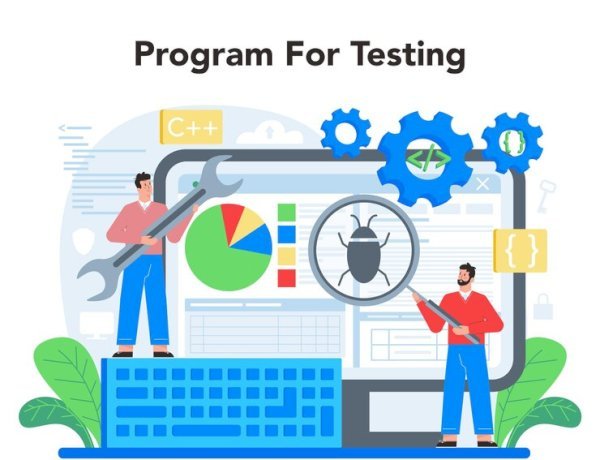Technology Trends Transforming Online Gaming in 2025
Explore the latest technology trends changing online gaming in 2025, including cloud gaming, AI, VR, mobile growth, esports, and cryptocurrency.

Online gaming has evolved into a global powerhouse, generating billions in revenue annually and drawing millions of daily players across different platforms. In 2025, the industry is undergoing a period of rapid transformation, driven by technological innovation. Advances in cloud streaming, artificial intelligence, blockchain payments, and immersive experiences are redefining how players engage with games. These trends are not just enhancing gameplay but also shaping how games are developed, distributed, and monetised, creating a more connected and accessible gaming world than ever before.
Cloud Gaming Becoming Mainstream

Image source: pinterest.com
Cloud gaming has moved from being a niche experiment to a central part of the gaming industry. Services like Xbox Cloud Gaming, NVIDIA GeForce NOW, and PlayStation Plus Premium now support full libraries of AAA titles that can be played on devices as basic as a smartphone or a budget laptop. The shift has been made possible by the expansion of 5G networks and ultra-fast fibre broadband, which provide speeds exceeding 1Gbps in many urban areas. In 2025, cloud gaming platforms are also offering AI-based upscaling, allowing lower-resolution streams to appear crisp and smooth. Subscription models, similar to Netflix, let players access hundreds of games for a fixed monthly fee, while hardware manufacturers are responding with cloud-optimised controllers and accessories.
Artificial Intelligence in Gaming

Image source: pinterest.com
Artificial intelligence is transforming both gameplay and game development. In modern titles, AI-powered non-player characters (NPCs) react to player behaviour in ways that make each encounter unique. For example, in tactical shooters, enemy AI now learns from a player’s combat style and adapts over time. Developers are also using machine learning algorithms to generate vast, detailed environments faster than ever, reducing production time and costs. AI-driven tools can analyse millions of player sessions to identify balance issues or detect cheating patterns within seconds. This level of adaptability keeps competitive games fair and enhances single-player storytelling by creating branching narratives that react dynamically to player decisions.
Virtual Reality and Augmented Reality Integration

Image source: pinterest.com
In 2025, VR and AR are no longer novelty add-ons — they are core parts of the gaming ecosystem. VR headsets like Meta Quest 3, Apple Vision Pro, and PlayStation VR2 have introduced ultra-lightweight designs, 4K-per-eye resolutions, and advanced eye-tracking, making virtual worlds more lifelike than ever. Meanwhile, AR gaming is evolving beyond mobile-based titles like Pokémon GO, with new AR glasses allowing players to interact with 3D game elements projected into their physical environment. Fitness-based VR games are also booming, with studios releasing motion-tracked workout titles that combine entertainment with health benefits. Global VR revenue is projected to surpass $15 billion in 2025, signalling that immersive gaming is here to stay.
Cross-Platform Play as the New Standard.

Image source: futurecdn.net
Cross-platform play has become a baseline expectation for multiplayer games. Titles like Fortnite, Minecraft, Rocket League, and Apex Legends let friends play together regardless of whether they use a PC, console, or mobile device. The rise of cross-progression systems means that gamers can start a session on their phone during a commute and continue on their console at home without losing progress. This shift is driven by player demand for flexibility and by developers seeking to grow player bases without platform restrictions. Even subscription services, such as Xbox Game Pass and Ubisoft+, now integrate across devices, making gaming more seamless than ever.
Blockchain and Cryptocurrency in Gaming

Image source: pinterest.com
Blockchain technology is reshaping the economics of gaming by introducing decentralised ownership of in-game assets. NFTs (non-fungible tokens) allow players to own, trade, and sell items independently of the game developer’s servers, creating real-world value for virtual goods. Cryptocurrency payments are also gaining traction due to their low transaction fees, speed, and global accessibility. Many platforms now support Bitcoin, Ethereum, and other digital coins, giving players greater choice and financial privacy. Gamers looking for fast and secure transactions are turning to crypto friendly gaming sites, where deposits and withdrawals can be completed in minutes rather than days. While regulation remains a topic of debate, the adoption rate suggests cryptocurrency will play an even bigger role in gaming economies over the next decade.
Advanced Mobile Gaming Experiences

Image source: futurecdn.net
The mobile gaming market is experiencing unprecedented growth, with 2025 revenues expected to surpass $120 billion worldwide. Modern smartphones now feature processors capable of handling ray tracing, allowing for console-quality lighting and reflections in mobile titles. High-refresh-rate OLED displays make action games smoother, while adaptive cooling systems prevent performance drops during extended play sessions. Games like Genshin Impact, Diablo Immortal, and Call of Duty Mobile are pushing technical boundaries, while cloud gaming integration ensures even the most demanding games can run on mid-range devices. In emerging markets, mobile remains the most accessible form of gaming, driving a surge in both casual and competitive titles.
The Growth of Esports

Image source: pinterest.com
Esports has evolved into a billion-dollar industry, with professional tournaments attracting live audiences comparable to traditional sports. Events like The International (Dota 2), League of Legends World Championship, and Valorant Champions Tour draw millions of viewers globally. Prize pools now regularly exceed $20 million, and sponsorship deals from major brands like Red Bull, Intel, and Nike are common. Universities across the US, UK, and Asia are offering esports scholarships, while professional training facilities provide structured coaching and career paths for players, commentators, and event organisers. Streaming platforms have also expanded monetisation options, allowing fans to support their favourite teams and players directly.
Stronger Security for Players

Image source: pinterest.com
With the rise of online play comes the need for advanced security. In 2025, most platforms have implemented multi-layer authentication systems that combine passwords, biometric logins, and device recognition. AI-driven fraud detection monitors for unusual login patterns and suspicious in-game purchases in real-time. Cloud-based account recovery tools help players regain access without lengthy support processes. Additionally, privacy-focused features allow players to control how much personal data is shared during gameplay, aligning with global data protection regulations such as GDPR and CCPA.
Social and Community-Driven Gaming

Image source: pinterest.com
Gaming has become as much a social activity as it is an entertainment form. Live in-game events, such as Fortnite’s virtual concerts or Roblox’s interactive brand worlds, have blurred the line between gaming and social media. Developers now design games with community content creation tools, enabling players to build and share their own worlds, mods, and skins. Social features like integrated voice chat, group quests, and streaming tools encourage collaboration, while matchmaking systems ensure players find others with similar skill levels and interests.
Conclusion
The online gaming industry in 2025 is thriving, driven by innovations that make it more immersive, accessible, and secure than ever before. From cloud streaming and AI-driven gameplay to cryptocurrency payments and virtual reality, the boundaries of what’s possible in gaming are expanding rapidly. These trends not only enhance entertainment but also create new opportunities for connection, competition, and creativity. As technology continues to evolve, the future promises even more exciting developments for players around the globe.
FAQs
1. What is the biggest change in online gaming in 2025?
The biggest change is cloud gaming. It lets you play big games online without buying an expensive computer or console.
2. How is AI used in games now?
AI makes game characters smarter, changes the game’s difficulty for each player, and helps stop cheating.
3. Are VR and AR games popular now?
Yes. VR headsets and AR glasses are better and lighter, so more people are using them to play games.
4. Why do gamers use cryptocurrency?
It is fast, safe, and costs less to send money. Many gaming sites now accept Bitcoin and other coins.
5. How big is mobile gaming in 2025?
Mobile gaming is huge. It is making more than $120 billion this year worldwide.
6. Is esports still getting bigger?
Yes. Esports tournaments give prizes worth millions, and some colleges even give scholarships to gamers.




























